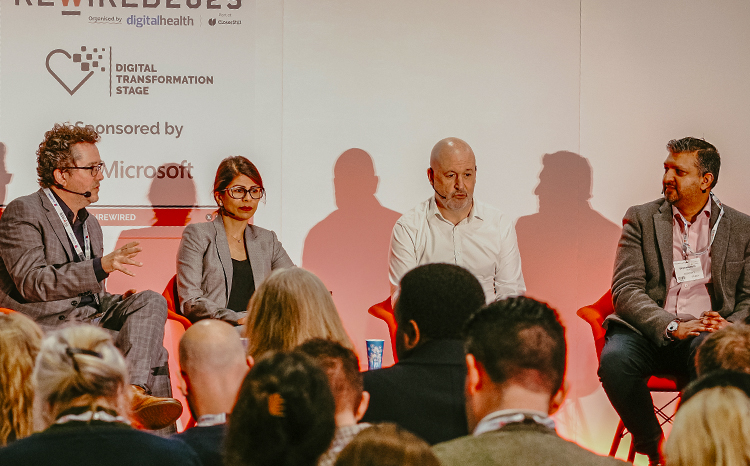Interoperable digital care can only be achieved with an open technology approach
- 22 September 2022

With Integrated Care Systems now coming into effect, Andy Meiner, chief revenue officer at ReStart, looks at what role interoperability will play.
Integrated care systems (ICSs) will struggle to achieve even the most basic objectives, such as virtual wards and integrated clinical pathways, without a fundamental change in approach. These digital transformation initiatives must be delivered against a backdrop of mandatory EPR deployments, convergence of systems, escalating trust mergers, creation of diagnostic alliances, hints of a centralised model care record, and unprecedented demands on clinicians.
Integrating Health and Care Data
ICSs face the challenge of merging multiple SCRs and trusts, whilst deploying electronic patient record (EPR) solutions to achieve consistent, cross-organisational clinical information. Therefore, the NHS is calling to collaborative technology partners for a greater focus on interoperability.
Yet while many vendors are talking an integration game, the reality on the ground is very different. Faced with the need to get multiple solutions to work together, the typical response from vendors is to demand the NHS organisation picks one of the incumbent solutions and migrates the merged organisation across to that single platform.
However, one size does not fit all, and it is important to assess the different stages of digital transformation and maturity across the NHS in a far more nuanced way such as:
1. What integrated data flows between systems exist within a trust. Which shared care records (SCR) are deployed at trust level, which bring in data feeds from primary care, mental health, ambulance, community, and social care. Except for primary care, a lack of digital maturity and inability to easily integrate into the SCRs is constraining the shared data vision objective.
2. What data is shared between SCRs within an ICS. Simply throwing out all SCRs except one is not an acceptable solution for most ICSs. Additionally, the first wave of SCRs deployed as part of the LHCRE programme are now showing their limitations and may not be suitable for ICS requirements.
3. How collaboration will be achieved between ICSs, especially for services provided across borders.
Interoperability Strategy
Every NHS organisation, be it at trust or ICS level, needs to have a solid data strategy. This will include interoperability, to achieve the short-term gains of convergence without throwing away the greater opportunity of moving to a truly patient-centric platform.
There is now an urgent need to achieve integration between systems – of vendor and data standards, be they proprietary or open. Any suggestion that hugely expensive, often recently implemented solutions are thrown out and replaced with just one EPR/SCR solution are impractical, often unnecessary, and expensive.
For the NHS trusts currently exploring plans to implement a new EPR by 2023, significant investment is required to replace inadequate current solutions and achieve a foundation for a digital future. Part of this investment will be to make sure that the new EPR maintains all the mission-critical interfaces to external systems which requires an open technology approach to deliver effectively.
Finding a way through
The NHS needs to find a way to integrate health and care data, to pull together information from multiple sources across areas to support effective clinical and social care decision making.
For years, vendors actively refused to open their products. But now (when procurement entry requirements are focusing more on interoperability of systems) integration tools are part of the offer. But these tools are not always truly open, and are often just another form of “stealth” lock-in. In this way, the NHS is unlikely to be able to eradicate budget draining annual license fees or achieve the level of flexibility and scalability required because organisations will still be beholden to this proprietary technology approach.
Open technology for scalable, flexible interoperability
Open technology is proven at all levels of NHS digital maturity. It leverages rather than discards investment in existing systems and reduces the need for expensive rip and replace programmes. It quickly reduces reliance on proprietary solutions, reducing recurring costs. Plus, by minimising disruption and upheaval, the entire process is not only cheaper, but also faster; allowing an acceleration of digital transformation programmes that deliver real benefits to both patients and clinicians.
Most trusts are already using interoperability to create interfaces between a trust integration engine (TIE) and various applications, from clinical radiology systems to administrative workforce scheduling.
The same open technology principle is also being used for more complex, multi-trust and / or multi-TIE interoperability. Interoperability is allowing trusts to merge and become one virtual entity by pulling together the information from multiple SCRs into a single interoperability record. Furthermore, this interoperability record can offer so much more than the inherently limited SCRs by rapidly integrating any number of clinical systems to provide not only basic patient data, but the depth and breadth of insight required to truly support effective clinical decision making, and in addition allow interaction with this data to support truly integrated care pathways.
The interoperability model can be used to enable alliances between different trusts. For example, enabling multiple trusts in one region to share pathology and radiology results.
As ICS digital maturity increases, the open technology approach will be required by the majority of trusts to ultimately provide the connectivity required to achieve the long-term goal of longitudinal patient records.
Delivering interoperability at scale, irrespective of the next generation of NHS policies, standards, criteria and funding, open technology led interoperability will be the foundation for NHS development for the foreseeable future.
Every NHS organisation needs to have a coherent data strategy to be assured that information can be best utilised across a geographic region to meet the challenges presented as virtual wards, integrated clinical pathways, population health strategies, system convergence, and trust mergers over the coming years. Interoperability, based on an open approach is at the heart of that data strategy, providing assurance through a robust, durable data model irrespective of vendors, standards, and political whim.
In addition, except for the handful of trusts with the internal capability to deliver the strategy themselves, NHS organisations will also need an expert partner and the necessary software platform to deliver interoperability across all levels of digital maturity.





8 Comments
All interoperability involves at least two translations. From the sender system to the interchange format, and from the interchange format to the receiver system. You can only translate what is unambiguous. This means that we need a full and adequate set of binary representations (codes) for everything that is exchanged. FHIR R4 profiles provide the appropriate format, but we also need terminology bindings to SNOMED CT and LOINC. I add LOINC because SNOMED CT does not proved an adequate set of codes for ‘observables’ such as those found in assessment measures. The problem seems to be the issue of placing codes in exactly the right place within the hierarchies, which is time-consuming and error-prone. LOINC avoids this issue.
A useful interoperability test has shown up in my personal life. My wife was admitted into Hospital K, the night before last, when her normal hospital, where all her records are, is Hospital G. (Hospital G’s A@E was busy , so the ambulance took her to Hosp, K)
After 36hours, K has retrieved recent discharge summaries for her from G, but I am not sure whether any deeper data has come across. I have had to supply medication details by
telephone.
The two hospitals are less than 5 miles apart. I hope this puts vague discussions about “interoperability” into focus, – for patients.
I will check in the next few days whether what Hosp K has received is sufficient – and timely enough – for her care.
I am afarid I disagree. Interoperability is both a technical and a people problem. However, the technology has to be fit fir purpose, and sadly, it seldom is. Without tech that is fit for purpose, we are just wasting our time.
The key problem is the word “digital”. Digital computers need unambiguous data. That means codes and IDs for everything that needs to be identified. The problem is that we do not have a complete set of codes for all the things that need them. SNOMED CT is not fit for purpose for things like social care assessments. Every other advanced country in the world used SNOMED CT and LOINC together – but not the UK.Are we right to be an outlier? I doubt it.
My experience over the last few days shows me that to say that “Interoperability is both a technical and a people problem. However, the technology has to be fit fir purpose, and sadly, it seldom is. Without tech that is fit for purpose, we are just wasting our time” is just not good enough.” I agree, but we should not just shrug our shoulders, and go away.
Interoperability can be a life or death matter for those patients who are treated in hospitals which do not hold their records. NHS IT people should be working day and night to be interoperable. Otherwise patients will die.
I my case, it is fortunate that I have been able to give a coherent history of my wife’s problems over the last few weeks. Otherwise the doctors who are treating her would have no idea the extent of her problems, limited to the paucity of medical records coming from her normal hospital – or her GP.
Some people will say this is all “anecdotal’ and therefore not to be taken seriously. I would claim that there are tens of thousands of patients who end up in settings where their GP or hospital records are elsewhere, and the doctors treating them are flying blind, with disastrous consequences for patient safety .
The other problem is the emphasis on data has assumed all data. It is unlikely in the short term that data can be homogenised (and vast amounts of notes which could be converted to data are collected). So a strategy for an ICS, in my view, needs to be based on critical data – which needs defining and other information organised (but maybe held textually) to aid a clinicians/practitioners information and support their decisions.
Give me strength, not another article restating the aims of Connecting for Health (AD 2002), but not explaining how not to make the same mistakes!
Where , Oh where, is the leader to bang all these heads together, and make something actually happen? I see nobody among NHSe, the vendors, the clinicians, the Trust managers, the Royal colleges. or the GPS
@HealthTechArch – Thank you for reading the article and for your comment.
I think it is sometimes easy to be cynical and dismissive about digital in the NHS. The article is about being pragmatic. It is about making best use of taxpayers’ money and learning from some of the mistakes made in NPfIT, and not assuming that there is a ‘silver bullet’ where 1 or 2 suppliers in an ICS will solve all the problems. It is about putting interoperability and data liquidity at the heart of ICS strategy so that desperately needed digital functionality can be implemented today without throwing away the opportunity to move to a more patient-centric architectures tomorrow (https://www.ey.com/en_vn/health/how-innovative-infostructure-can-power-the-purpose-of-integrated-care-systems). I deliberately didn’t specifically reference standards to a) avoid a debate around the standards themselves (e.g., FHIR vs openEHR – yawn), and b) because there will be new standards and protocols around in the future. The article is about encouraging an approach where ICSs balance making best use of what they have got now, what they can get soon, and where they need to be in the future.
For concrete examples, I would reference Scandinavian countries, such as Sweden and Norway, where, based upon market requirements and national directives, they have heavily consolidated on (different) single suppliers whose solutions are built upon open data architectures and offer very high levels of interoperability. To a great extent this futureproofs their strategy, and side steps the grim spectre of vendor lock-in that is looming over the NHS.
For an example closer to home, you only have to look at the recent successful deployment of Urgent Care Plans in London where a solution based upon an open data architecture (openEHR in this case) is integrated into the existing mixed vendor infrastructure. (https://www.digitalhealth.net/2022/08/urgent-care-plan-deployed-london/)
Another article simply stating the same perennial problem. No solutions proposed apart from “open data” and “open technology”. All very worthy but somewhat handwavy. Let’s have a couple of concrete examples of what is meant by that and specific actions that can be taken.
Comments are closed.